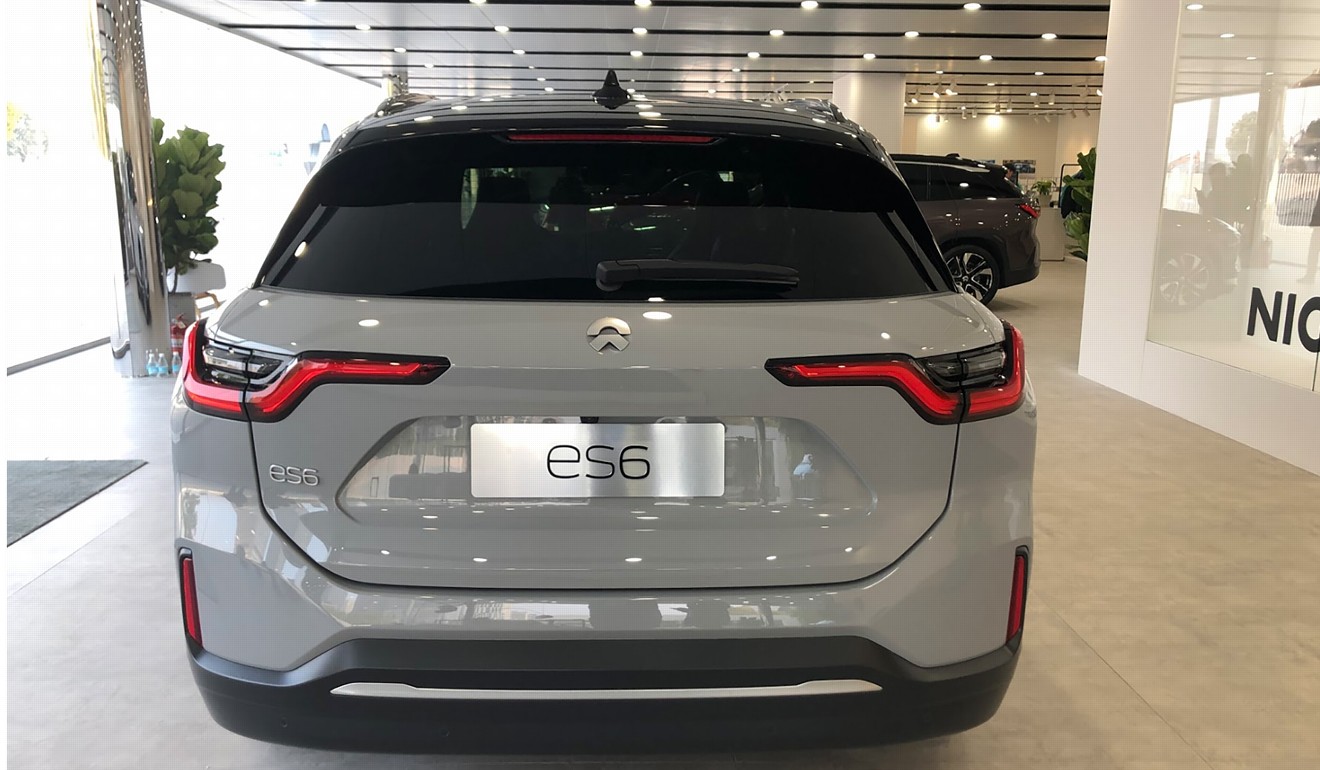
China’s Tesla challenger Nio ‘not worried’ by tariff cuts, sees customer service as providing edge over US competitors
- Nio reported sales of more than 2,059 units of its ES8 model in October, outshining Tesla whose sales on the mainland totalled 211 vehicles for the month
- Tesla announced on Friday that it will cut prices in China by 25 per cent, after Beijing announced it would roll back a punitive 25 per cent levy on US auto imports that took effect in October
Nio, known as a Tesla challenger in mainland China, has stepped up a gear to consolidate its foothold in the mainland’s electric vehicle (EV) market, launching its second model targeting a broader customer base.
William Li Bin, chairman and founder of the Shanghai-based electric carmaker, said that the lowered tariff on American-made automobiles exported to China would have minimal impact on Nio’s sales amid buoyant demand for EVs in the world’s largest auto market.
Nio reported sales of more than 2,059 units of its ES8 model in October, outshining Tesla whose sales on the mainland totalled 211 for the month, down 70 per cent from a year earlier, after it raised prices by about 20 per cent due to an additional 25 per cent tariff imposed by Beijing, according to figures by the China Passenger Car Association.
Tesla disputed the figures without disclosing an exact number.
ES8 was the first model launched by Nio at the end of 2017, a seven-seat SUV that has a staring price of 448,000 yuan (US$64,927) before subsidies.
“We still have a lot to learn from Tesla since it has a longer history and is a leader in the electric vehicle segment,” said Li. “But we also have our own advantages such as our customer service model and battery swap system.”
The Shanghai-based company, which raised US$1.15 billion on the New York Stock Exchange via an initial public offer in September, launched the ES6 sport-utility vehicle (SUV), its second production model, on Saturday, marking its entry into a more affordable segment.
Since listing on September 12, Nio’s shares have risen 23 per cent. They closed at US$7.70 on Friday in New York, up from their offer price of US$6.25.
The car with a driving range of 510 kilometres, has a base price of 358,000 yuan before subsidies.
The ES6 uses a high-efficiency permanent magnet motor – responsible for medium and low-speed daily driving, and a high-performance induction motor which kicks in to provide extra acceleration and speed.

Nio said the ES6 is the world’s first EV that uses both a permanent magnet motor and an induction motor.
In Shanghai, an ES6 goes for 300,000 yuan after deducting combined subsidies of 60,000 yuan from central and local governments.a
On Friday, Beijing announced it would roll back the additional 25 per cent punitive tariff on cars imported from the United States. Tesla announced hours later that it will slash prices of its models on the mainland accordingly.
A Tesla Model S 75D sports costs 742,300 yuan.
Tesla is building a factory in Shanghai with an annual capacity of 500,000 units, which will help it make its cars more affordable to Chinese customers.
Nio followed on the heels of Xpeng Motors, another Chinese electric car start-up which started delivering the first batch of its five-seater G3 SUVs on Wednesday.
The G3 SUVs are priced between US$29,000 to US$41,000.
China’s auto market is likely to see a year-on-year sales drop this year, the first since 1992.
However, new-energy vehicle sales hit 860,000 units in the first 10 months of this year, up 75.6 per cent from the same period in 2017.
“I am still bullish about China’s auto market, particularly in the electric vehicle segment, since it is the new growth driver here,” said Li. “Nio will continue to focus on building high-performance, high-end EVs to chase further growth.”

